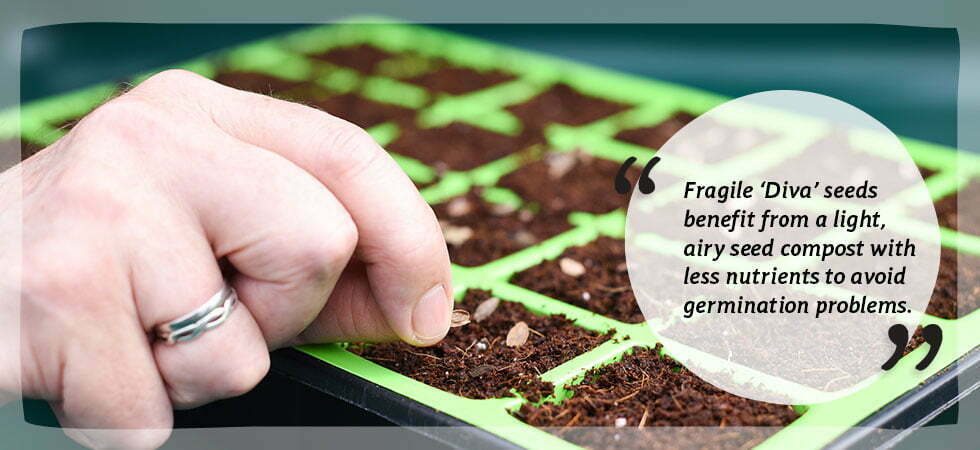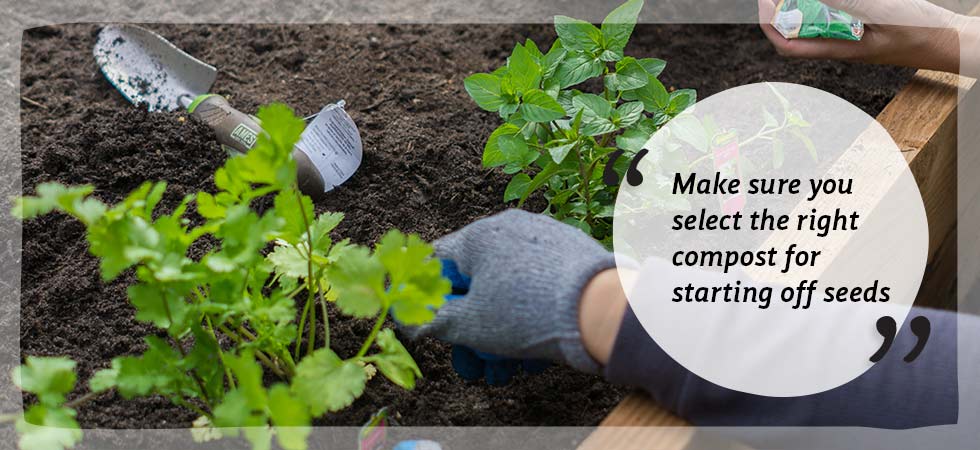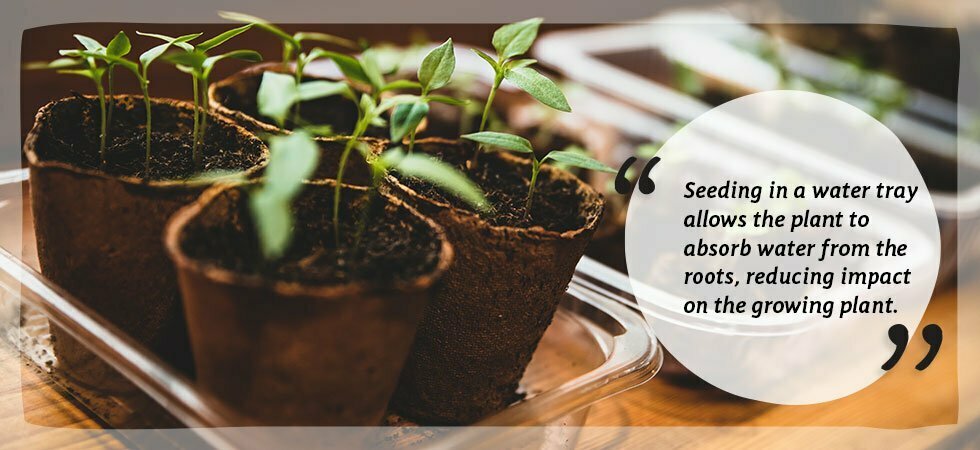Why you need seed compost
So you’ve decided to take the plunge and grow your own plants from seed. Congratulations! There’s nothing more rewarding then stocking your garden for less and keeping up a steady stream of annuals from year to year.
With food prices at an all-time high, especially for organic product, there’s never been a better time to plant your own fruit and veg and, err, “enjoy the fruits of your labour” (Sorry).
Best compost for seeds
Some seeds can be planted straight into the soil. This is known as direct sowing. But many seeds need more care to thrive. It’s why so many people decide to pay the garden centre to deal with that hassle and buy larger plants instead. No wonder the UK has more than 2,500 garden centres.
Putting ‘diva’ seeds in multipurpose compost leftover from last season and trusting luck is likely to end in disappointment. To encourage strong root growth, you need to plant seeds in light, fluffy compost with good drainage like our seeding compost with perlite Coco Grow+. This will allow them to develop a good root system. This helps deliver more nutrients to the plant, protect against disease and also ‘transplant shock’.

Can I plant seeds in home-made or general compost?
Many people do use general multi-purpose or home-made compost. While this may work, results fluctuate. Smaller more fragile seeds are prone to failure at worst, or with varying results and success at best.
In home-made compost, the levels of critical nutrients such as nitrogen, phosphorous and potassium are erratic. Leftover roots, garden debris and the compost being in large chunks make it much harder for seeds to root and develop into healthy seedlings.
Ordinary ‘home composted’ garden compost is generally far too rich for seeds. You can mix it with other growing medium, but this adds more complexity. Should you go down this route, remember to:
- Sterilise the mix by putting it in the oven for half an hour at a minimum of 120 degrees. This kills off any germinating weeds.
- Make sure any compost used is low enough in nutrients so they don’t damage or kill your seedlings.
- Add the right amount of perlite, sand or vermiculite to create an airy soil structure.
- Sieve, sieve and sieve again! Seed compost needs to be as fine as possible.
Ready-made seed compost ingredients
To give better control over what is being added, seed compost is actually made of very few ingredients. The focus is on providing light, evenly textured compost, which allows for seeds to root easily. We support the use of peat-free compost to do this, as a sustainable and eco-friendly choice.
So do you actually need seeding compost?
We believe so if you want to see great results you are proud of. Smaller spaces need a higher rate of seed success to benefit from higher yields and a luscious greener garden as plants mature. It all starts with the success of the seed.

If you want to harvest organic fruit and veg, it’s also important to grow them in an organic compost like coconut coir. Our peat-free coir composts are made from 100% natural coconut husks. They are Soil Association approved and used in organic farming. (Use licence number AL30474)
For seeds, our Coco Grow+ blend contains perlite to make the seeding compost even more light and airy for root development. It’s been proven to:
- Improve root growth
- Encourage fast germination
- Retain water, reducing the risk of seeds and seedlings drying out
- Be pH neutral – not too acidic, not too alkaline
- Free from bacteria and weed seeds
“Be prepared”

To grow seedlings successfully, this famous Scouts and Guides’ motto stands true. We recommend:
- Buying a heated propagator or greenhouse. Most seeds need warmth to germinate. If you can’t cram any more seed trays onto windowsills, you’ll need to spread out. Your investment means you can enjoy growing your own produce and plants for a stunning garden far earlier in the year.
- Washing out seed trays and pots before you start planting up to prevent infection from past diseases or pests. You might want to try our Coir seeding pellets Coco Dots. These allow you to create individual plug plants by expanding these small coir pellets and planting individual seeds. When you’re ready, you can place them in a bigger pot or into the ground with minimal root damage.
- Having a watering can with a rose head, with lots of little holes, allows you to give your seedlings a fine mist of hydration. That way you’ll avoid disturbing any new growth. A low-pressure water spray gun also works.
- Using quality organic peat free seed compost. And, funnily enough, we know just where you can get some!
Watering: the Goldilocks balance
When it comes to watering your seeds, a fine mist from a watering can straight after sowing help compact down any loose compost. It also pushes out any large air pockets, which helps the seed make contact with the compost around it.

Our coir seed compost is fantastic at quickly absorbing water. However you don’t want to waterlog a seedling’s roots, so make sure you test the bottom of the compost layer, as well as the top.
A houseplant soil probe or even just pushing a pencil down into the compost will help you judge whether you need to water your seedlings. If the compost sticks to the pencil’s point, then it doesn’t need watering.
Pro tip: Pop a seed tray inside another tray with a shallow layer of water. This allows the compost to soak up what it needs rather than dislodging seedlings from a watering can deluge.
Tips from the ‘Green Gardeners Guild’ online advice library
On the lookout for more tips and hints? Our blogs are packed with pro hacks:
- How to grow plants from seeds: step by step
- How to grow vegetables in coco coir peat
- How to prepare coco coir: garden use vs indoor plants
Share your seed compost success!
We would love to see how you get on with our seed compost. Please post your pictures and tag in @cocoandcoir on Instagram and Twitter.










